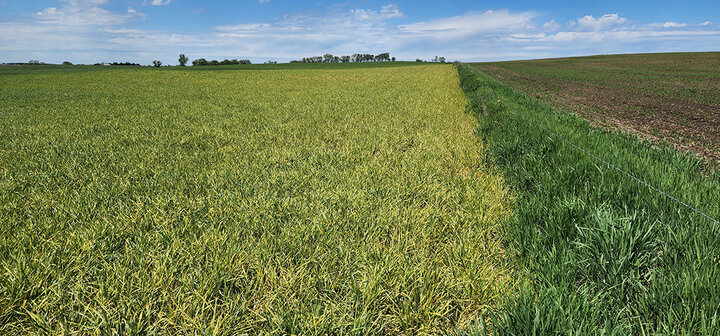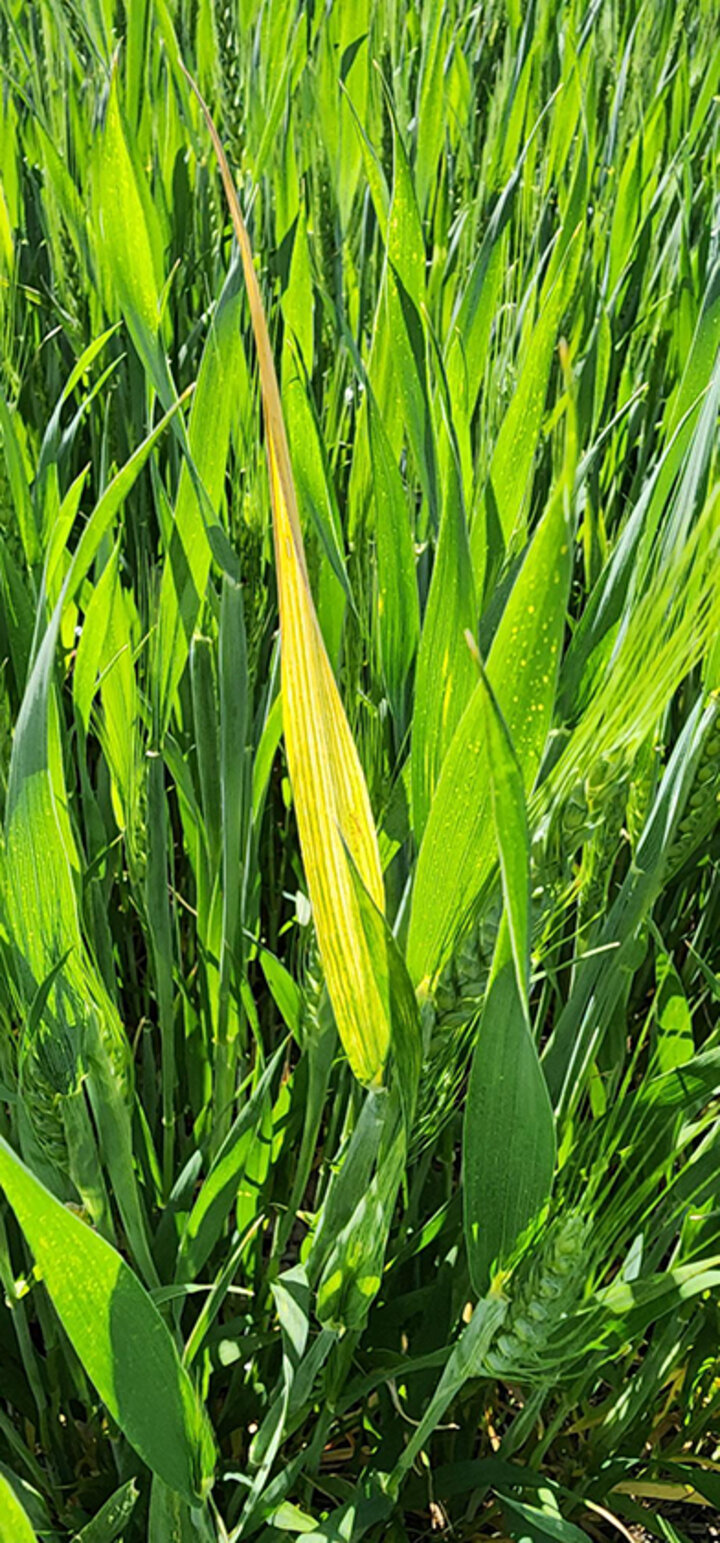As of May 9, the majority of Nebraska wheat fields had trace to low levels of disease (Figure 1). Stripe rust (Figure 2) has been confirmed in eight counties in the southern tier of counties (Figure 3). Leaf rust has not been observed yet (Figure 4).



On May 3, severe symptoms of the wheat streak mosaic disease complex were observed in a field in Johnson County in southeast Nebraska (Figures 5 and 6). Some samples submitted to the UNL Plant and Pest Diagnostic Clinic are showing symptoms of the wheat streak mosaic disease complex.

Other diseases observed in wheat fields this week at trace to low levels include barley yellow dwarf (Figure 7) and leaf spot diseases (Septoria tritici blotch and tan spot). A few areas in eastern Nebraska are showing a moderate to high risk of Fusarium head blight.
Management
Stripe rust, leaf rust and fungal leaf spot diseases are managed by planting resistant varieties and applying a fungicide to susceptible varieties timed to protect the flag leaf. Fusarium head blight is managed by planting moderately resistant varieties and applying a fungicide at early flowering. The North Central Regional Committee on Management of Small Grain Diseases (NCERA 184) has compiled a table of fungicides used to control wheat diseases, including the efficacy of each fungicide in controlling specific diseases (Table 1).
The return on investment from applying a fungicide to control wheat diseases depends on the specific disease, the level of resistance of the wheat variety planted, disease pressure, efficacy of the fungicide on the specific disease, and fungicide cost. In general, return on investment is higher in high disease pressure growing seasons and when a low-cost fungicide — such as a generic — is used.


The wheat streak mosaic disease complex is managed by controlling volunteer wheat and grasses before planting wheat in the fall. The volunteer wheat should be completely dead at least two weeks before planting. Several varieties have moderate to good resistance to the disease complex and the wheat curl mite vector.
Wheat Disease Survey
Please contribute to the 2024 rust tracking map to help Nebraska Extension monitor the movement of stripe and leaf rust in Nebraska.

